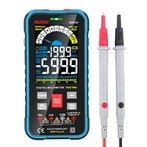Introduction to methods for making objects clearer under a microscope
Microscopes have been widely used in modern science.
The types of microscopes are divided into optical microscopes and electron microscopes according to their large categories.
Optical microscopes can be divided into transmissive and reflective types according to their different optical path forms;
Electron microscopes can be divided into transmission and scanning electron microscopes. The difference between electron microscopes and optical microscopes is that the separation rate is greatly enhanced. However, it is generally required that the sample be placed in a vacuum chamber, and some samples are not suitable.
Here, a common reflective optical microscope is used as an example to illustrate the adjustment of imaging methods, and the principle of transmission is the same.
Optical microscopes mainly image through objective and eyepiece groups, which are usually equipped with different magnification lens groups. By combining, a very large magnification range can be formed. This configuration is because although the details of the high-power lens group are clearly displayed, the field of view and depth of field are narrow, making it difficult to move in different target areas. Although the magnification of the low-power lens group is small, the field of view and depth of field are both large, making it easy to search for targets on a large scale. Moreover, certain specific samples do not require significant magnification, but all targets in the field of view are required to be as clear as possible, so low-power lens groups also have their place of use. The combination of the two can achieve perfect clear imaging.
1、 Required materials and tools:
Objective lens group: such as 100x, 200x, 300x, 600x, etc
Eyepiece group: such as 5x, 10x, 15x, 20x, etc
Focusing handwheel: including coarse and fine tuning
Loading platform: can move in any direction within a plane, making it easy to find the target area
sample
light source
Color filter
2、 Steps and methods:
Turn on the light source
Rotate the rough adjustment handwheel to pull the objective lens group away from the stage to a safe distance
Based on experience, replace with a low-power objective lens group and a suitable eyepiece group
Place the samples that have undergone necessary processing on the loading platform
Adjusting eyepiece pupil distance
Move samples through the loading platform, search for samples and target areas, observe and select targets through rough adjustment of the handwheel
Replace the appropriate high-power objective and eyepiece, and carefully focus by adjusting the handwheel carefully
After obtaining clear imaging, the study can be conducted, and if necessary, photos can be taken
After completing the work, turn off the light source and remove the sample. The objective lens group and eyepiece group must also be removed and stored in a dedicated dry and cool place, such as a drying bottle.
2、 Precautions:
Focusing technique: When fine-tuning the focus, there must be a process of blurring, clarity, and re blurring, in order to confirm the most accurate focus found. Therefore, it is necessary to slightly go over and then turn back to the clear focusing position.
For certain samples with specific shapes, color filters can be selected to improve the clarity of details. For example, for substances sensitive to narrow wavelengths and samples stained with fluorescence, specific color filters can be inserted into the optical path. In addition, in order to observe the special organization in the metal sample, a polarizer can be inserted, the angle can be adjusted, and the tissue condition can be studied by observing the specific polarized light reflected by it.






